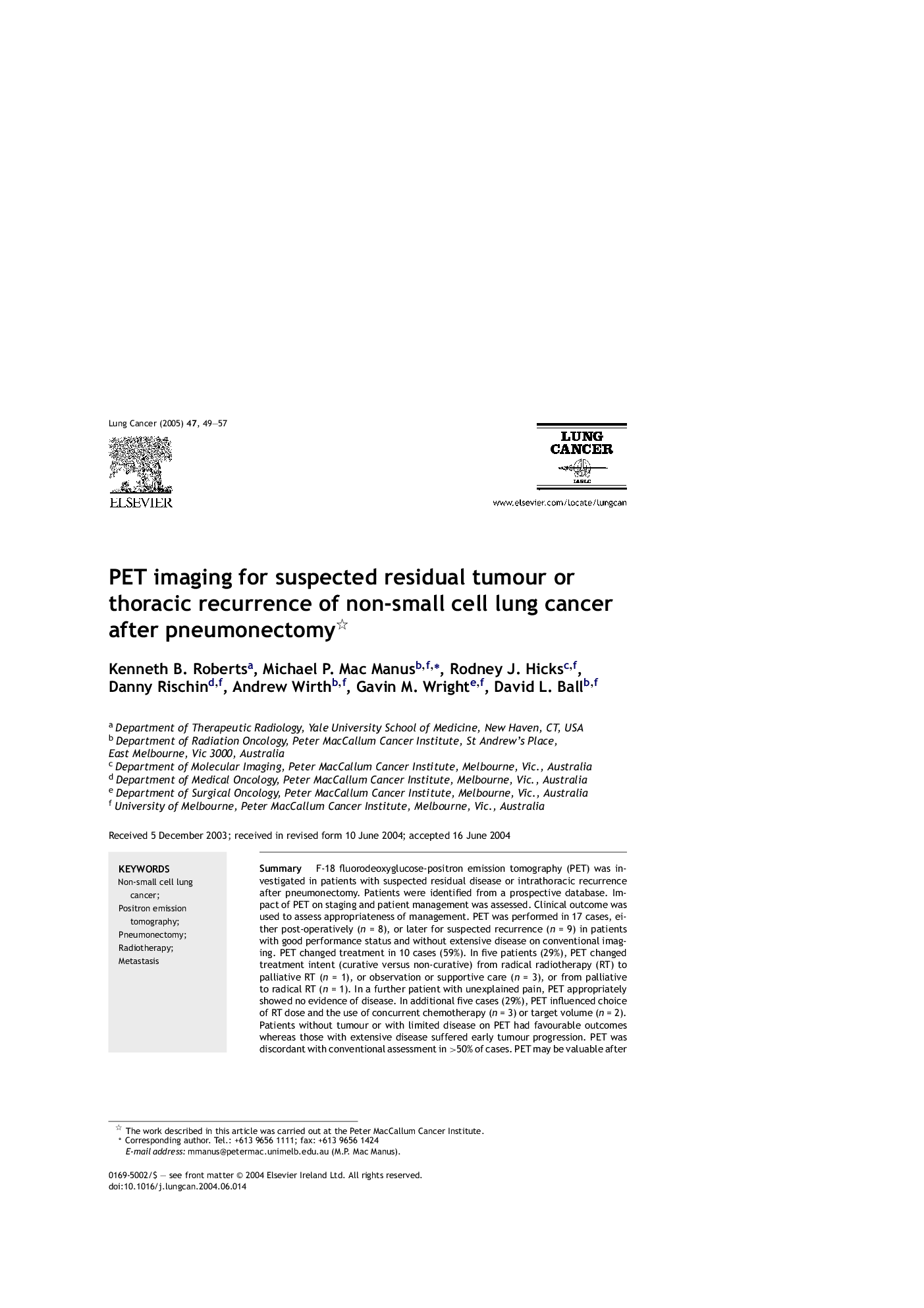| Article ID | Journal | Published Year | Pages | File Type |
|---|---|---|---|---|
| 10912384 | Lung Cancer | 2005 | 9 Pages |
Abstract
F-18 fluorodeoxyglucose-positron emission tomography (PET) was investigated in patients with suspected residual disease or intrathoracic recurrence after pneumonectomy. Patients were identified from a prospective database. Impact of PET on staging and patient management was assessed. Clinical outcome was used to assess appropriateness of management. PET was performed in 17 cases, either post-operatively (n = 8), or later for suspected recurrence (n = 9) in patients with good performance status and without extensive disease on conventional imaging. PET changed treatment in 10 cases (59%). In five patients (29%), PET changed treatment intent (curative versus non-curative) from radical radiotherapy (RT) to palliative RT (n = 1), or observation or supportive care (n = 3), or from palliative to radical RT (n = 1). In a further patient with unexplained pain, PET appropriately showed no evidence of disease. In additional five cases (29%), PET influenced choice of RT dose and the use of concurrent chemotherapy (n = 3) or target volume (n = 2). Patients without tumour or with limited disease on PET had favourable outcomes whereas those with extensive disease suffered early tumour progression. PET was discordant with conventional assessment in >50% of cases. PET may be valuable after pneumonectomy if the patient is being considered for adjuvant or salvage radiotherapy although specificity may be reduced due to post-operative inflammatory changes.
Related Topics
Life Sciences
Biochemistry, Genetics and Molecular Biology
Cancer Research
Authors
Kenneth B. Roberts, Michael P. Mac Manus, Rodney J. Hicks, Danny Rischin, Andrew Wirth, Gavin M. Wright, David L. Ball,
